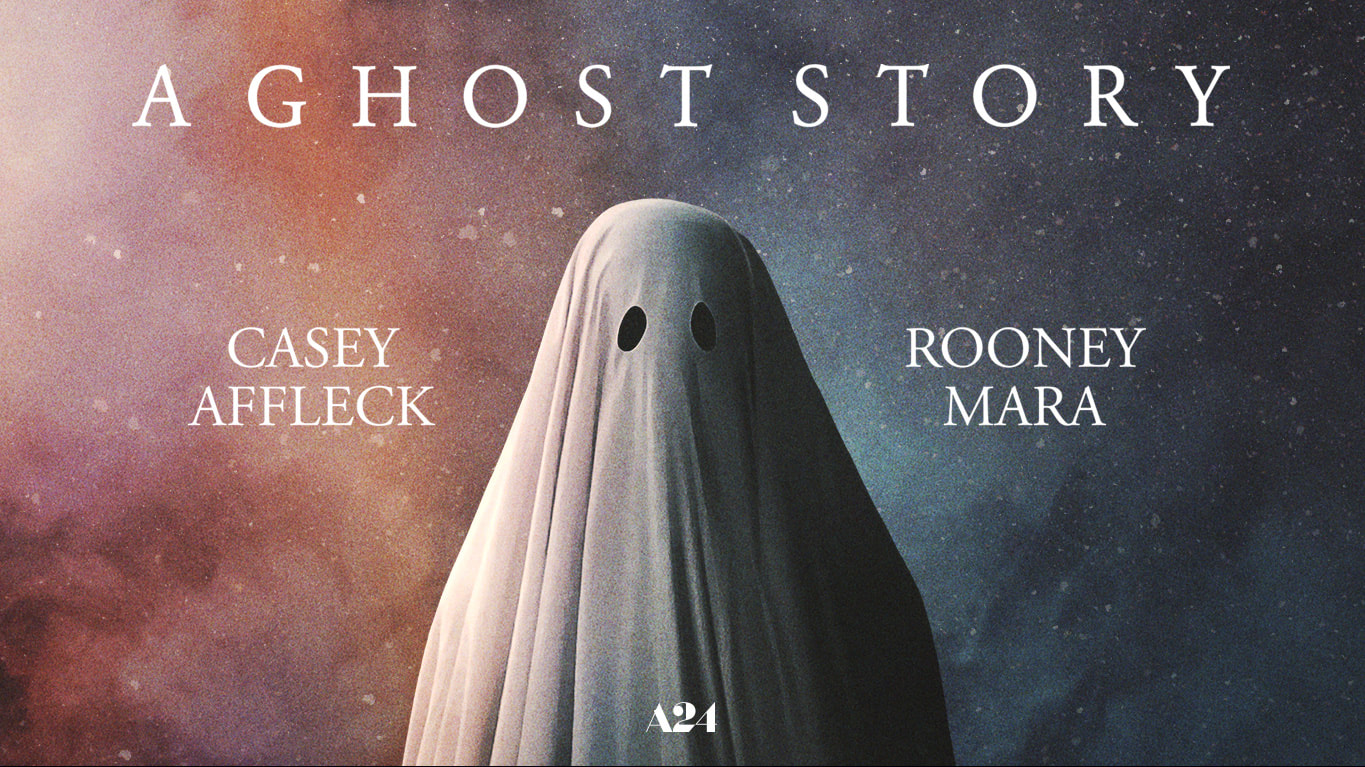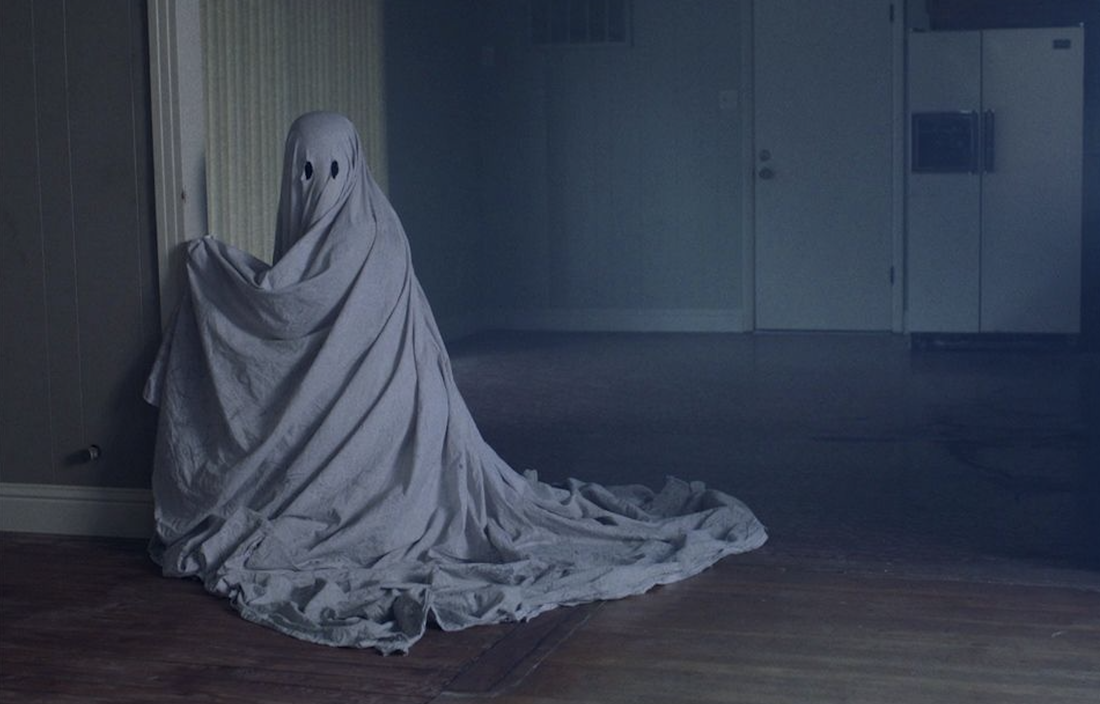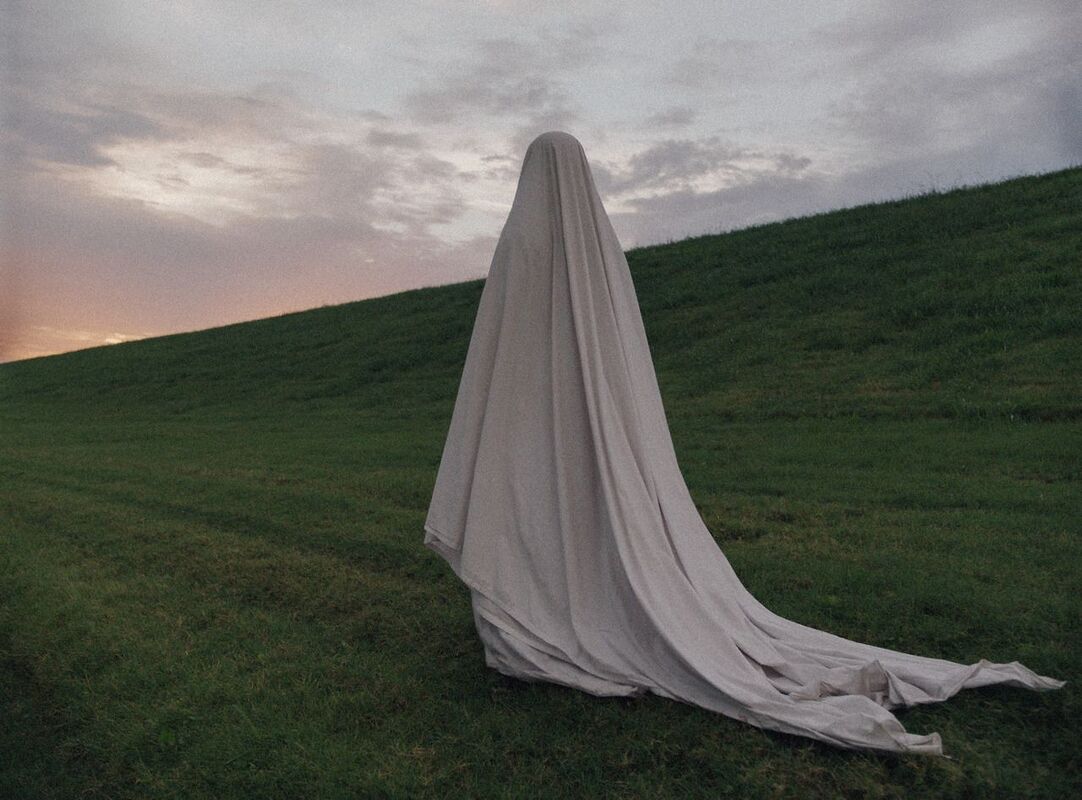David Lowery’s A Ghost Story is captivating yet aesthetically mellow. Although the film is about a ghost after life, it is not a horror film but rather a softly drawn drama that reflects on life, death, and love beyond the grave. Lowery’s perspective on grief is heartbreaking in the most poetic way
A Ghost Story tells a simple tale across various timelines, following C (Casey Affleck) and M (Rooney Mara), a young married couple in their first home together. The narrative finds its structure after the death of C in the beginning of the film. C takes the form of spirit, wearing a sheet over his body for the remainder of the film. Devastated by the loss of her husband, M lives in quiet solitude, as C watches over her from the afterlife. Generations come and go throughout the home, offering many perspectives of lives across time. Lowery’s portrait of a soul is a unique blend of loving and longing, framed in a 1.33:1 aspect ratio to express the feeling of being metaphorically boxed in. C’s ghost cannot escape being confined to his past life, because he has not yet let go. His sorrow torments him, holding him hostage for generations. Flashbacks of happiness, sadness, and hard times intermix with C’s fading memory of his beloved M. C perceives time differently than humans, and so audiences get lost in an unending existence, only held still by feelings of love and longing.
While the film explores the abstraction of time, A Ghost Story’s main focus is on the idea of heartache. Lowery’s angle on grief is distinct, as it looks at it from both sides. Most films about tragedy and loss only look at grief through the eyes of the living, but Lowery questions the living emotions of the deceased. In A Ghost Story, we see both C and M struggle with grief and denial. Although they are in different dimensions, they remain connected through the pain of missing each other. The atmosphere of emotional pain in a sci-fi-esque drama is a unique vision that blossoms from a beautiful film.
The film communicates through compelling visuals rather than dialogue. The few instances of dialogue that are present provide depth to the story as thought provoking ideas rather than expositional interactions. Much of the dialogue centers around the main question: “How are we remembered when we’re gone?” The film explores this idea through emotions and the passage of time spanning from C’s existence. A Ghost Story achieves a sense of inspiration for life, reminding us not to waste away our lives, because at any given moment, it could all come to an end.
The acting in A Ghost Story is notable as Rooney Mara and Casey Affleck perform well together, but it is when their characters are separated that their emotions shine. Even with a sheet covering his body for most of the film, Affleck is able to make us feel the sense of emptiness his character endures. Despite the lack of dialogue, the audience is able to connect deeply with the characters, due to Mara’s and Affleck’s silent emotion, presented through expression rather than verbally. Emotion can often be found in the eyes, and so A Ghost Story integrates many close shots of the characters’ eyes in order to provoke empathy. Affleck and Mara are able to pull on the heartstrings of the audience, making the experience a more fulfilling watch.
The cinematography by Andrew Droz Palermo alone is enough to encapsulate the thematic emotions of A Ghost Story. The visuals bring a soft and dreamlike feel to the story, which helps to further the idea of death and timescapes. As a film that does not include much dialogue, it is important for the visuals to be engaging, and A Ghost Story executes this perfectly through the use of colors and lighting. Warmth and comfort are identified through soft, yellow tones, while regret and loneliness are shown through dull greys and blues. The colors contrast each other, as does C’s mentality over time. This dreamlike atmosphere builds mysticism and shows the passion put into this film.
The musical score brings yet another layer of emotion to the film. The original score by Daniel Hart is a somberly dramatic addition, which proves its importance due to the lack of dialogue. The film also features the original song “I Get Overwhelmed” by Dark Rooms, which helps convey the themes of anxiety, depression, and longingness. The lyrics explore the overwhelming state of the world we live in, and the pain that comes with life, but without pain, there could be no healing. This song sets the tone of the film early on, and is played again at the end as it re-encompasses the loss felt between both C and M. A Ghost Story is brought to life by the emotional score, satisfying the space left by the speech-free script.
Lowery’s elegant tale of the afterlife is poignant, but may not be for everyone. A Ghost Story is a fascinating perspective on love and despair, but its lack of dialogue prevents it from reaching the necessary character building and connection. The cinematography and score make up for what is lacking, creating a rare spectacle that is in a class of its own. With only a ninety minute runtime, A Ghost Story is a short, worthwhile watch as an independent and poetic tale.




 RSS Feed
RSS Feed
